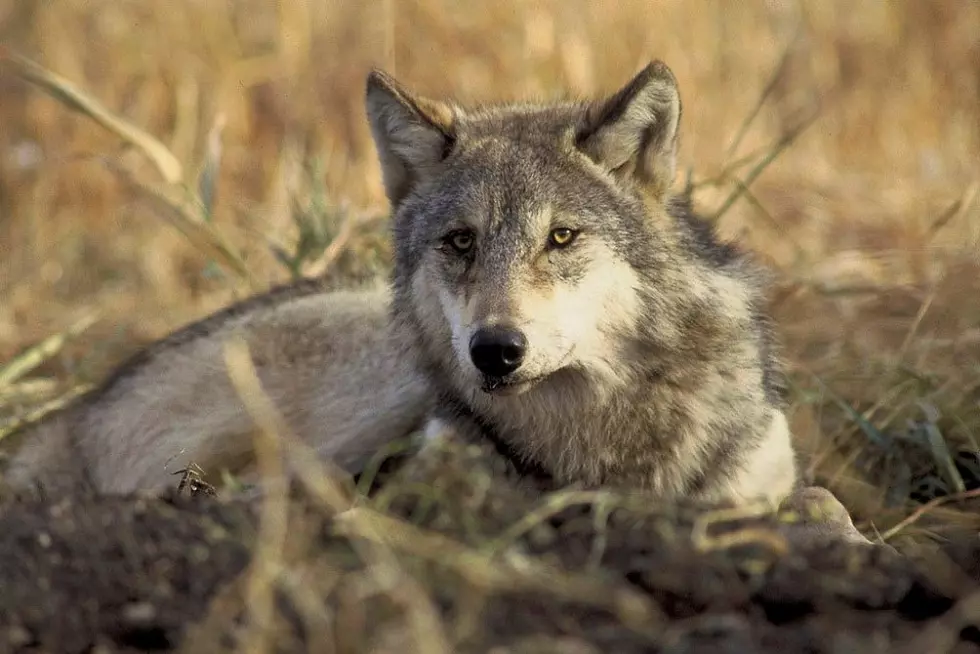
Opinion: Anti-predator hysteria dominates Montana’s 2021 Legislature
For decades Montana has been a leader in the scientific management of wildlife. That has included managing predator species, in which Montana has carefully struck a balance of returning these animals to the landscape while balancing the needs of the people who live here. But now that appears to be changing, driven by a visceral hatred of predators by a few people.
I would know, because I led the recovery program for the grizzly bear for the U. S. Fish and Wildlife Service for 35 years in the Northern Rockies and the North Cascades. During much of that time, a similar recovery program was underway for the grey wolf in the Northern Rockies.
Both the grizzly bear and the grey wolf were listed in the 1970s as threatened or endangered under the Endangered Species Act. Many predators were pushed to the verge of extinction in the contiguous U.S. by relentless persecution driven by fear of large carnivores and the ill-conceived manifest destiny approach that required the subjugation of wild nature.
With applied conservation based on science and commitment to balance the needs of people and wildlife, we managed to recover the wolf by reintroducing them to select wild areas. Grizzly bears took more time and effort because they reproduce so slowly, and do not disperse as rapidly, as wolves.
As recovery proceeded, more wolves and grizzlies encountered more people and there were some conflicts where livestock were killed. To address these conflicts, agencies in Montana developed programs to capture and remove wolves and bears involved in conflicts, and funded reimbursement programs to pay ranchers for lost livestock.
Some people continued their obsessive dislike of predators. These people disliked any predation on livestock and they continued to believe that predators were going to destroy deer and elk herds. They believed that deer and elk needed to be “saved” by killing wolves, mountain lions and bears by any available means so that more deer and elk would be available for sport hunters.
Now legislators, aided by new Gov. Greg Gianforte, are trying to implement aggressive policies to kill predators using hunting, leg-hold traps, neck snares, extended seasons, and even shooting wolves at night with spotlights. Wolf trapping and snaring would be extended into the time that bears are out of their dens resulting in bears being killed or maimed in wolf traps and neck snares. Montana legislators also want to start payment of bounties to hunters and trappers to kill more wolves.
In one of their most harmful bills, legislators are considering unlimited spring hound hunting of black bears, which has been banned in Montana since 1921. Hound hunting is very disruptive and dangerous to bears because it can result in cub abandonment, chronic stress, heat exhaustion in hot weather, and abandonment of home ranges. Since grizzly bears can be found anywhere in western Montana, this hound bill will result in grizzly bears being chased by hounds. The likely result will be dead grizzly bears as hound hunters defend their dogs from grizzlies.
Grizzly bears are routinely managed if they come into conflicts with people. This includes capture and relocation or removal if the bear is a repeat offender. A bill written by the new leadership of Montana Fish, Wildlife, and Parks under Gianforte would not allow relocation of any grizzly bear in any type of conflict if outside the recovery zones.
This is contrary to 40 years of Montana grizzly management policy and would dramatically increase the number of bears killed. Another Montana bill would allow anyone to kill any grizzly that they thought was “threatening livestock”, which would essentially allow anyone to kill a grizzly bear just for being in the general vicinity of livestock. Both of these bills would preclude delisting grizzly bears in Montana.
I support management of wildlife that requires ethical, fair-chase hunting using science to set mortality limits. But these extreme anti-predator laws are a relapse back into the dark ages of wildlife exploitation. There is little need to “save” game animals from predators since most of Montana has abundant big game herds even in areas with predators. In fact, Montana hunters can kill up to three elk per year, and the legislature is currently considering bills to kill more elk.
The unsportsmanlike killing of wolves promoted by the Legislature is a blatant rejection of the concept of fair chase hunting, as defined by the Boone and Crockett Club. Such extreme anti-predator policies will malign the image of sport hunters in the eyes of most of the public.
This brings us back to the recovery of wolves and grizzly bears started 40 years ago to heal the damage done in the Northern Rockies. After all the effort, funding, and progress under the federally led wolf and grizzly recovery programs, we now have predator-hating state politicians promoting regressive legislation that could negate the gains that have been made to repair the historic wrongs done to wildlife and nature by past generations.
Christopher Servheen is a professional wildlife biologist and served for 35 years as the U.S. Fish and Wildlife Service grizzly bear recovery coordinator. He is the co-chair of the IUCN/SSC North American Bear Expert Team. He currently serves as volunteer vice-president for the Montana Wildlife Federation.
